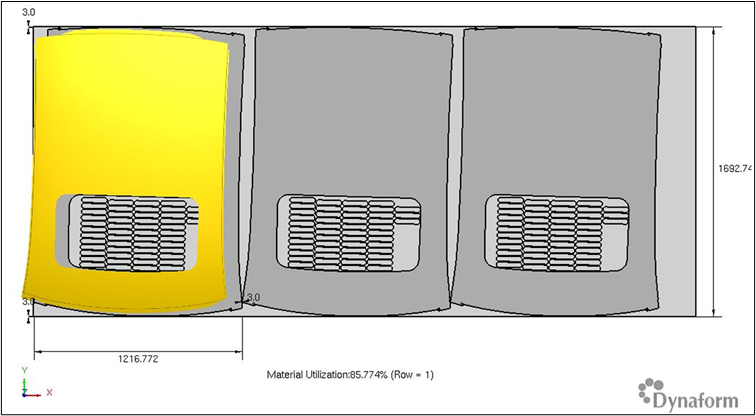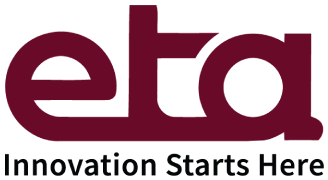Description:
Unlock significant cost savings in sheet metal stamping. Learn how Dynaform’s advanced Blank Size Engineering (BSE) module optimizes blank nesting and formability to boost material yield and win more profitable business.
Introduction
In the high-stakes world of sheet metal stamping, raw material cost is the undisputed heavyweight, frequently accounting for up to 70% of a finished part’s total cost. During the critical Request for Quotation (RFQ) stage, engineering teams are under immense pressure. They must deliver accurate cost estimates and feasibility assessments with razor-thin turnaround times. This often leads to compromises—nesting layouts are “good enough” rather than truly optimal, and potential formability issues are overlooked, creating significant financial risks down the line. This blog explores the technical challenges of early-stage cost estimation and details how a dedicated simulation tool, Dynaform, addresses these issues head-on.
The Industry Challenge: The RFQ Dilemma
The core challenge for costing engineers and tool designers lies in a fundamental conflict: speed versus accuracy. When multiple suppliers are bidding for the same project, the one who can quote the lowest piece price with the most efficient process often wins the business. However, this speed can come at a high price:
- Sub-Optimal Yield: A manually derived or rushed nesting layout might achieve a 60% material yield, while a competitor using advanced nesting optimization tools finds a 69% yield for the same part. This 9% difference can be the deciding factor in winning the contract.
- Recurring Losses: Unlike one-time tooling costs, material cost is a recurring expense for every single part stamped. A small inefficiency in the blank size, multiplied by a production volume of hundreds of thousands of parts, results in enormous annual losses lost to the scrap bin.
- Unforeseen Manufacturing Issues: A quick blank estimate that ignores formability can lead to manufacturability problems like cracks or excessive thinning on the shop floor, resulting in costly delays and tool rework.
From CAD to Cost with Integrated Simulation
Dynaform’s Blank Size Engineering (BSE) module is engineered to resolve this conflict by integrating powerful simulation technologies into a swift, automated workflow.
The process begins by importing a 3D CAD model of the component. Dynaform supports a vast array of native and neutral formats, including CATIA, NX, STEP, and IGES. The engineer then assigns the material grade from an extensive built-in library (or a user-defined card) and defines the sheet thickness.
From here, the software takes over:
1. One-Step Simulation for Blank Unfolding: Using a powerful one-step solver, the Unfold function automatically calculates the optimal flat blank shape required to form the final 3D part. This process is incredibly fast and provides a highly accurate starting point for nesting.

2. Integrated Formability Analysis: Crucially, the BSE module doesn’t just produce a flat pattern. It simultaneously runs a rapid formability check, generating results like the Forming Limit Diagram (FLD) and thinning/thickening plots. This allows engineers to identify high-risk areas for cracks or wrinkles before the quotation is even submitted, enabling proactive Design for Manufacturing (DFM) feedback to the customer.

3. Advanced Nesting Algorithms: This is where Dynaform creates a significant competitive advantage. The software doesn’t just perform a simple nesting. It runs hundreds of iterations in seconds, varying the blank’s rotation angle to find the absolute best fit on the coil or plate. It evaluates multiple nesting strategies, including:
-
- One-Up: A single part per press stroke.
- Two-Up: Two parts per stroke.
- Two-Pair: A unique Dynaform capability where two parts are intelligently rotated to fit into each other’s scrap areas, often yielding significant material savings over a standard Two-Up layout.
By automating these complex calculations, Dynaform provides a scientifically optimized result, eliminating the guesswork and human error inherent in manual methods.
Dynaform’s BSE Module: Features & Benefits
Dynaform directly targets the pain points of the stamping industry with a suite of features designed for maximum impact.
- Assembly BSE (Batch Mode)
- Benefit: This is an enterprise-level solution designed to enhance organizational productivity and cross-functional collaboration. It enables Product Design, Costing, and Purchase teams to work in sync, allowing for efficient feasibility and costing studies across multiple sheet metal parts. This approach delivers significant time savings while maintaining the same level of accuracy as individual part-mode analysis.
This is a paradigm shift in productivity. Instead of processing one part at a time, engineers can import an entire product assembly (e.g., a door with all its reinforcement panels). The software will then automatically run the blank development, formability analysis, and nesting optimization for every single part in the assembly in a batch process, even running overnight. The next morning, a single, compiled report is ready, comparing the best nesting strategy and yield for all 100+ components, drastically reducing manual effort and delivering unparalleled speed in RFQ response. This replaces the outdated, time-consuming single-part workflow common in other solutions.
- Benefit: This is an enterprise-level solution designed to enhance organizational productivity and cross-functional collaboration. It enables Product Design, Costing, and Purchase teams to work in sync, allowing for efficient feasibility and costing studies across multiple sheet metal parts. This approach delivers significant time savings while maintaining the same level of accuracy as individual part-mode analysis.


- Advanced & Unique Nesting Capabilities
- Benefit: Dynaform moves beyond basic layouts to find hidden savings. With unique features like
Multi-Blank Nesting, the software can test combinations of different parts (e.g., nesting a small bracket alongside a larger panel) to find the most efficient pairing on a single sheet. Furthermore,
- Advanced & Unique Nesting Capabilities
- Benefit: Dynaform moves beyond basic layouts to find hidden savings. With unique features like
Multi-Blank Nesting, the software can test combinations of different parts (e.g., nesting a small bracket alongside a larger panel) to find the most efficient pairing on a single sheet. Furthermore,


-
Part-in-Hole Nesting allows for smal ler components to be nested within the scrap cut-out areas of larger parts, maximizing the utilization of every square millimetre of material. These capabilities are unique to Dynaform and are not found in competing software.

- Automated, Comprehensive Reporting
- Benefit: In less than five minutes, Dynaform can generate a detailed PDF or HTML report for a given part. This report is not just a picture of the nesting layout. It’s a complete costing analysis that includes vital data such as material utilization (%), gross and net blank weight, cost per piece based on material price, scrap recovery value, required coil width and pitch, and even the estimated blanking force in tons. This empowers engineers to make informed business decisions with confidence.

-
Conclusion
In today’s competitive landscape, settling for “good enough” in raw material costing is no longer a viable strategy. Inefficiencies that were once accepted as the cost of doing business are now liabilities that erode profit margins and lead to lost contracts.
Dynaform’s Blank Size Engineering module is more than a calculation tool; it is a strategic weapon for the RFQ process. By leveraging advanced simulation, automated workflows like Assembly BSE, and unique optimization algorithms, it empowers engineers to deliver the most accurate, competitive, and profitable quotations possible. This shift towards front-loaded analysis and automation is the foundation of the industry’s move toward digital twins and fully streamlined manufacturing pipelines.
Don’t let your profits end up in the scrap bin. Discover the savings you’ve been missing.
Ready to see the impact on your own parts? Reach us at shashankp@eta.com / +91 96201 98993. Let us benchmark your real-world challenges and show you the ROI.
